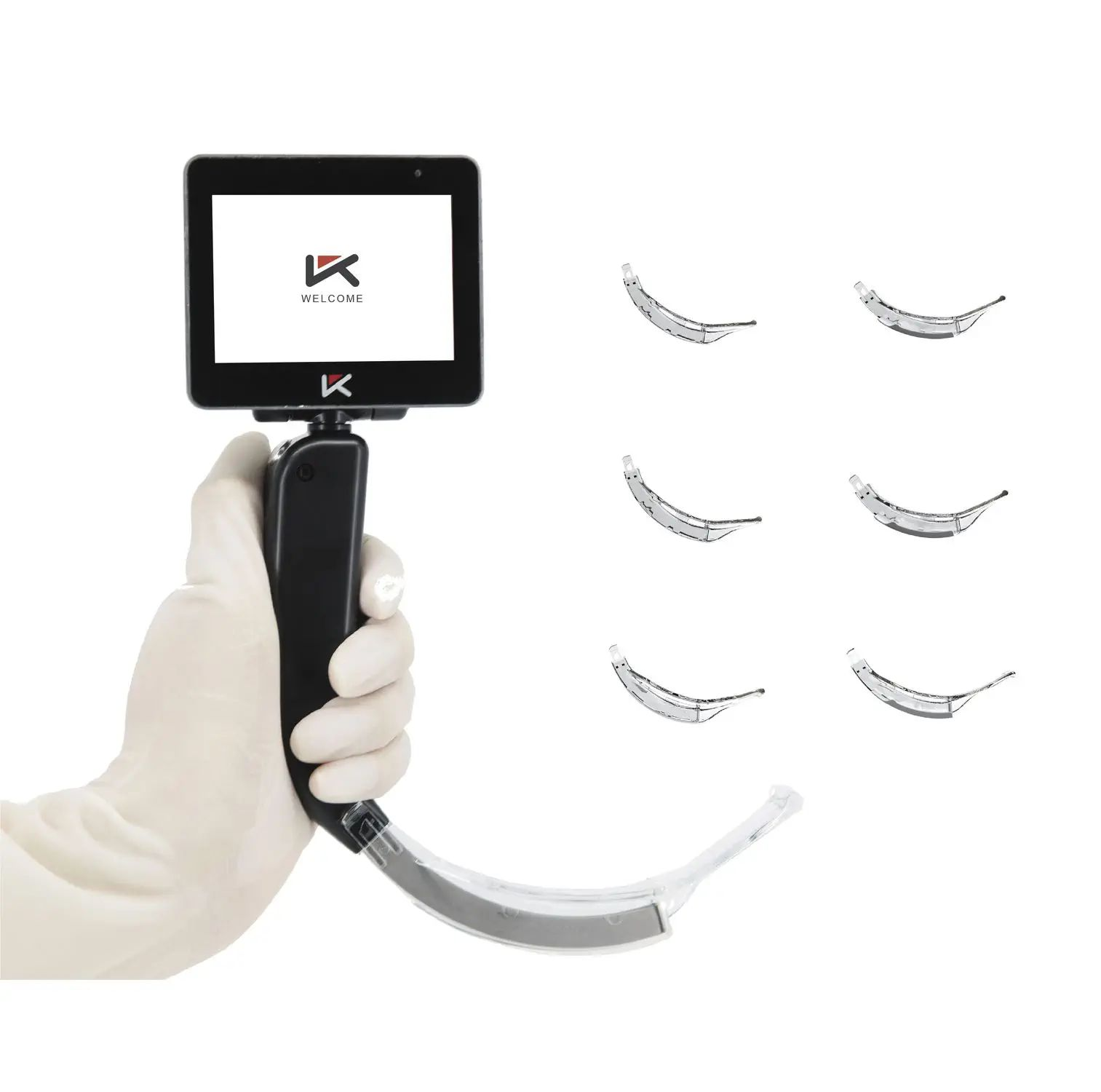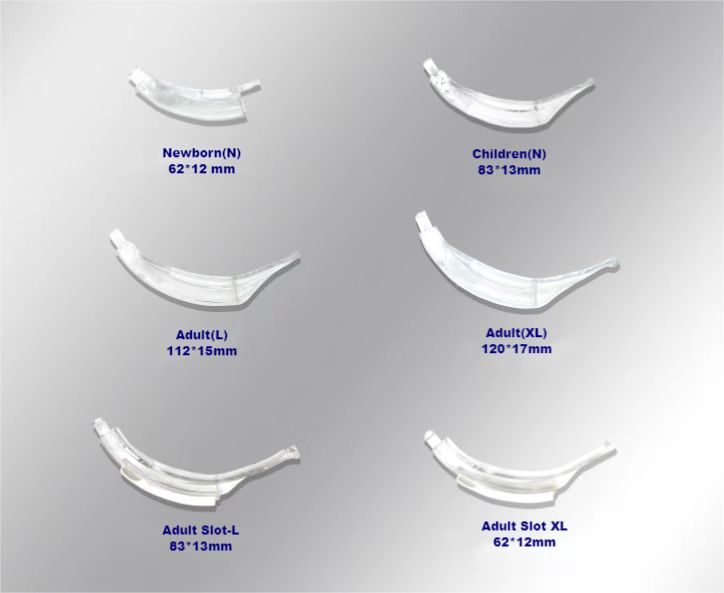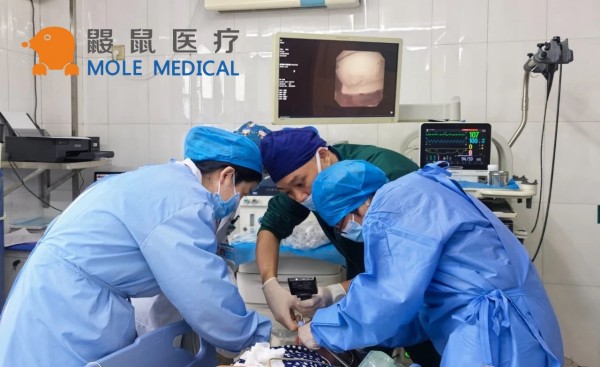Disposable Video Laryngoscope: Advanced Intubation
Dec 23, 2023
Advanced airway management is a critical component of emergency medicine, requiring specialized tools and techniques to ensure the safety and well-being of patients. One such tool gaining increasing popularity is the disposable video laryngoscope, also known as a disposable airway management device or disposable intubation device. This innovative instrument features a video camera attached to the tip of the blade, providing real-time imaging of the airway and improving visualization during intubation procedures.
Video-assisted intubation techniques have been shown to enhance success rates and reduce complications, particularly in difficult airways or emergency situations. They also offer a single-use option for healthcare professionals, mitigating the risk of cross-contamination and infection.
Key Takeaways:
- The disposable video laryngoscope enhances visualization and success rates during intubation procedures
- It is a single-use option that reduces the risk of cross-contamination and infection
- Video-assisted intubation is particularly effective for managing difficult airways and emergency situations
- These devices are gaining increasing popularity in the field of emergency medicine
- The use of disposable video laryngoscopes improves patient outcomes and enhances the skills of medical professionals
Understanding the Disposable Video Laryngoscope
Medical professionals rely on disposable video laryngoscopes to ensure reliable airway management in critical situations. These single-use devices provide enhanced visualization during intubation and reduce the risk of cross-contamination between patients due to their disposability.
Disposable laryngoscopes for intubation come in various designs and offer advanced features such as anti-fogging, high-resolution cameras, and ergonomic handles for comfortable use. These devices are also compatible with video-assisted intubation equipment, allowing for superior accuracy during intubation.
Disposable videolaryngoscopy equipment plays an essential role in ensuring safe and efficient intubation procedures, as well as improving patient outcomes. Medical professionals can use these devices with ease, as many disposable video laryngoscopes come with user-friendly interfaces. The proper use of these devices is crucial, and it’s imperative to note the importance of training medical professionals in their use.
Overall, single-use video laryngoscopes offer numerous advantages and are worth considering in airway management procedures. Their effectiveness in visualization and disposability makes them a valuable asset to medical professionals.
Video Laryngoscopy for Emergency Intubation

When it comes to emergency intubation, time is of the essence, and accuracy is crucial. Disposable video laryngoscopes have become an increasingly popular tool in managing this challenging process.
Video laryngoscopy for emergency intubation enables medical professionals to obtain a clear view of the airway in real-time, enhancing visualization and eliminating the need for blind intubation attempts. This not only saves time but also reduces the risk of complications that may arise from multiple attempts.
Using a disposable video laryngoscopy tool in emergency intubation scenarios can bring significant benefits. These devices promote speed, accuracy, and overall success rates, resulting in improved patient outcomes.
As such, disposable video laryngoscopes have become a valuable addition to the airway management toolkit of emergency responders, anesthesiologists, and critical care physicians.
Video Laryngoscopy for Difficult Airways
In situations where traditional intubation methods fail due to challenging anatomical or physiological conditions, video laryngoscopy can be a game-changer. Using disposable video laryngoscopes for managing difficult airways offers significant advantages over conventional methods, such as enhanced visualization and increased chances of successful intubation.
Patients with complex airway issues can greatly benefit from this technology, which allows for improved accuracy and fewer complications during intubation procedures. Furthermore, disposable video laryngoscopes offer cost-effective and safe solutions to healthcare personnel, by decreasing the likelihood of spreading infections and optimizing the resources available.
Conclusion
In conclusion, the use of disposable video laryngoscopes has proven to be a game-changer in advanced airway management. These single-use devices have revolutionized intubation procedures, providing enhanced visualization and accuracy. Video laryngoscopy has especially proven useful in emergency intubation scenarios, enabling medical professionals to act swiftly, accurately, and safely.
Moreover, disposable video laryngoscopes have become vital tools for managing difficult airways. These devices have significantly increased the success rates of intubation procedures in patients with complex airway issues, leading to improved patient outcomes.
In summary, the benefits of using disposable video laryngoscopes, including their effectiveness in emergency intubation and difficult airway management, cannot be overstated. These disposable airway management and intubation devices are a valuable investment for medical professionals seeking to enhance their skills and improve patient outcomes.
Overall, the role of disposable laryngoscopes for intubation, video-assisted intubation devices, and disposable videolaryngoscopy equipment for video laryngoscopy in the healthcare landscape is a significant development that will shape the future of airway management.
Categories
Latest Articles

Disposable Nephroscopes: Redefining Safety & Efficiency in Urology
Introduction The shift towards minimally invasive urological surgery has found a pivotal ally: the disposable nephroscope. As traditional reusable scopes grapple with persistent biofilm contamination risks and soaring sterilization costs, the global medical community is rapidly adopting single-use solutions. This article analyzes the clinical value, technological evolution, and dynamic innovation landscape driving this transformative shift. ... Read more

Disposable Video Laryngoscope Blades: The Ultimate Solution for Preventing Cross-Contamination
In the operating room, as the cold light of a video laryngoscope illuminates a patient’s airway, an age-old medical challenge is being redefined: How can life-saving instruments avoid becoming vectors of infection? Jiangsu MoleMedical drives an innovative safety revolution—replacing reusable devices with single-use, sterile laryngoscope blades that create a pure barrier for critical airways. Traditional video ... Read more
-2.jpg)
FDA & CE Approved Video Laryngoscope: What Makes It Stand Out?
Introduction In high-pressure emergencies and precision-driven operating rooms, video laryngoscopy is revolutionizing airway management. Mole Medical’s FDA and CE-certified technology replaces tactile-dependent “blind intubation” with real-time visual navigation – enhancing safety, accuracy, and clinical outcomes worldwide. Why Certification Matters Mole Medical’s dual certifications validate its global compliance and performance: FDA Clearance: Rigorous validation of safety/efficacy ... Read more

Mole Medical Showcases Advanced Endoscopy Solutions at CMEF Autumn 2025, Driving Global Partnerships
Guangzhou, China – September 26-29, 2025 – The 92nd China International Medical Equipment Fair (CMEF Autumn) concluded successfully on September 29th at the Canton Fair Complex in Guangzhou. Mole Medical Technology Co., Ltd. (Mole Medical) made a significant impact at the event, drawing global medical professionals and partners to its booth (Hall 2.1, Stand Q24) ... Read more

How to Use Disposable Ureteroscopes Safely and Efficiently
In the field of urology, the application of disposable electronic ureteral-kidney pelvis endoscopy catheters is leading the technological innovation in minimally invasive surgeries. According to the 2024 multi-center research data from China’s urology department, among the over 5,000 surgeries included, the patient group using disposable catheters performed significantly better in key indicators such as operation ... Read more



